Growing lilacs in the garden: how to plant and care for flowering shrubs
For a long time, lilac is one of the most beloved ornamental shrubs, which is widespread in our gardens and parks, requiring very little care when growing. The adorable and lush lilac tassels can be white, pink, purple and blue, and also have simple and double shapes. It blooms in late May - early June. At this time, the garden is filled with a pleasant aroma and looks festive and romantic.
The main thing is to choose the right place for planting it at their summer cottage, prepare and fill the planting pit and plant it according to the recommendations that you can get acquainted with below.
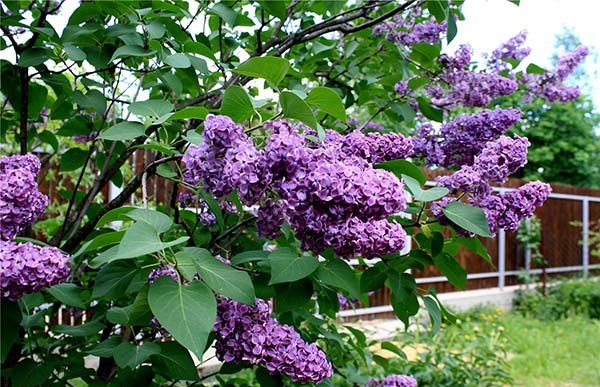
Content
Popular types and varieties of lilac
The most popular types and varieties of lilacs are the following:
- Amurskaya;
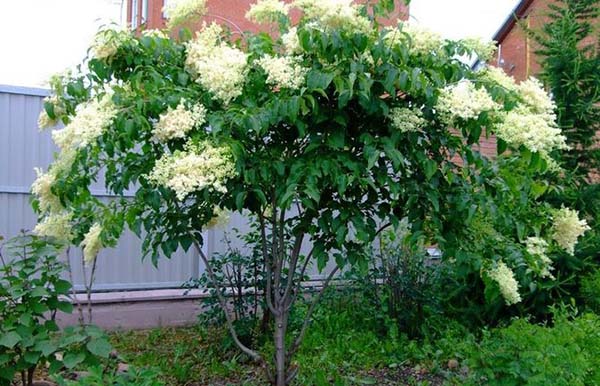
- Hungarian;
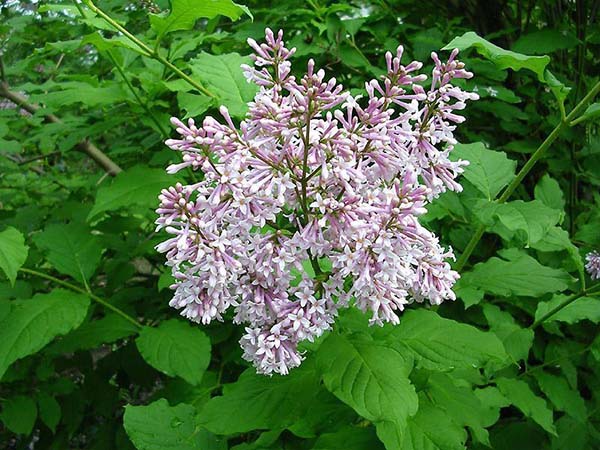
- Chinese;
- Meyer;
- Hairy, or hairy;
- Persian;
- Common (most popular varieties: Aucubafolia,Beauty of Moscow, Rose of Moscow, Red Moscow,Belle de Nancy,Henri Robert,Katerina Havemeyer,Space,Massena, Miss Helen Wilmot,Knight,Oliver de Serres, Pearl, Sensation).
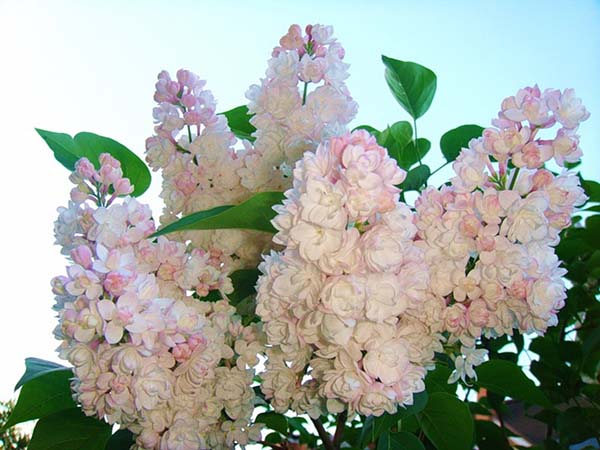
Beauty of Moscow
Naturally, the most popular is common lilac; also in the Middle Lane (Moscow region), Amur and Hungarian varieties of shrubs are very often grown.
Video: varieties of lilac
When to plant lilacs: optimal timing
The best time for planting and transplanting lilacs is late summer - early autumn (in other words, late August - early September), but most gardeners plant lilacs in early spring, trying to catch it before its buds begin to bloom, that is, around the month of April. The shrub can also be transplanted in the summer in July, since immediately after flowering it begins a dormant period.
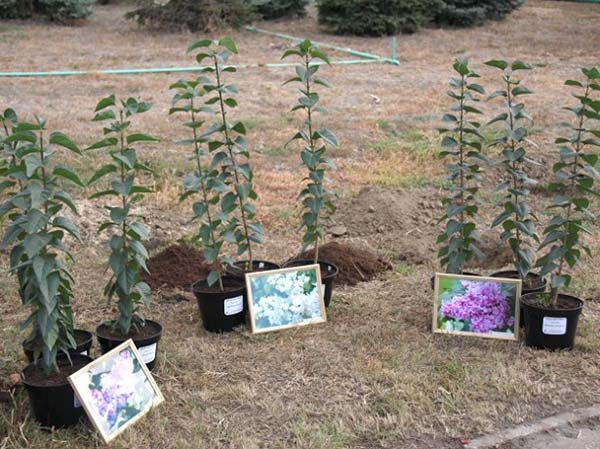
Place and soil in the garden for planting lilacs
Lilac is a drought-resistant and winter-hardy shrub that loves warmth and light very much. In the shade, it can also grow, but the bushes will stretch out, and the flowering will not be so abundant.
The shrub does not tolerate excessively flooded and marshy places. If there is a lot of water in the spring, then this will oppress the plant, respectively, it will develop poorly and bloom dimly.
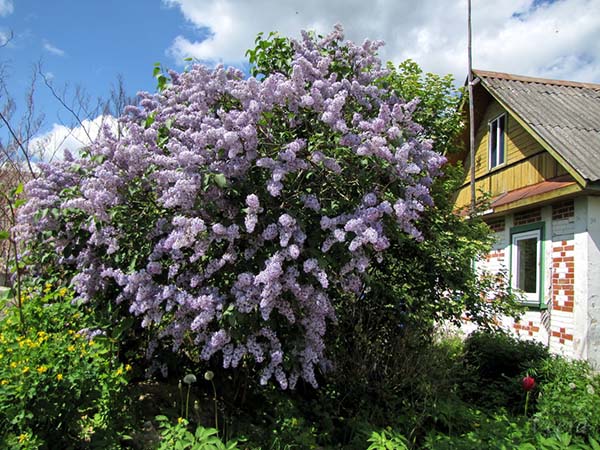
Also, lilacs should not be planted in a place where strong drafts blow, in other words, it should be covered from strong gusts of wind, because in the early years, young seedlings can simply break off. Therefore, as a rule, it is planted next to a fence or near a garden house or any other summer cottage buildings.
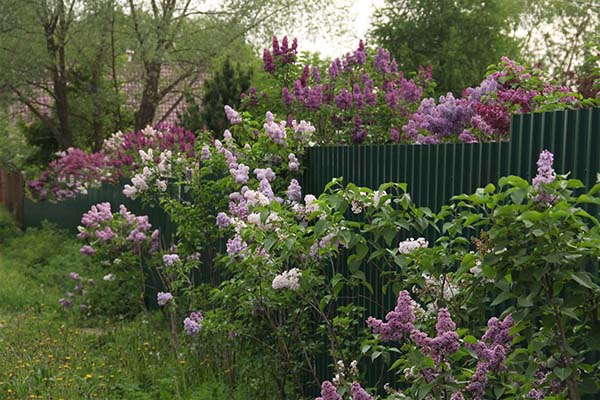
By the way! A blooming lilac hedge looks very beautiful.

In fact, this shrub can grow anywhere and in any land, but it needs a slightly alkaline soil and must be planted in a previously prepared nutrient soil. The planting hole is made depending on the fertility of the soil. For example, if the soil is fertile (sandy loam, light and loose), then the optimal size of the planting pit for planting lilacs should be 50 cm in diameter and 50 cm in depth. If the ground is sandy, then the size of the pit should be increased by about 1.5-2 times. If the soil is heavy and clayey, then the hole must be dug deeper and a good drainage layer must be laid on the bottom.
To prepare a soil mixture for a 50 to 50 planting pit, you will need at least humus (about 20 kg or 2 buckets) and wood ash (300-400 grams is about 3-4 glasses) or 100-200 grams superphosphate.
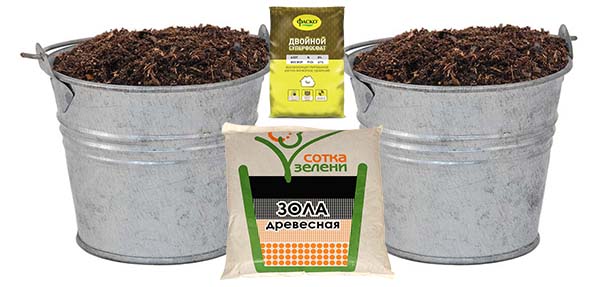
Fertilizers are applied so that the supply of nutrients is maintained for 4-5 years.
Planting lilacs in open ground
All varieties of lilacs are propagated by layering and cuttings. However, if you plant cuttings, the shrub will only bloom for 4 years. You can also grow lilacs from seeds by collecting seeds from faded panicles, but this process is very long, so the best and optimal breeding method is to transplant annual shoots.

It is advisable to plant or transplant lilacs in cloudy weather or in the evening.

Step-by-step instructions for planting lilacs in open ground:
- Find the optimal place in the garden and dig a planting hole that matches the soil fertility.
- Fill the hole with humus and ash. Moreover, fertilizers must be well mixed with ordinary garden soil so that the root system of the seedling does not come into contact with them during planting.
- If you have a seedling with a closed root system, then place it directly in the center of the hole; if with an open root system, then spread the roots directly over the mound from the previously poured soil mixture.
- For better branching after planting, you can pinch 2-3 pairs of tip buds.
- Water abundantly. With watering, the ground will be compacted and the roots will come into contact with the ground, which will also contribute to better rooting.
- When the earth settles, compact the soil a little with your foot and add more soil.
- Water again.
- When the water completely goes into the ground, mulch with the same humus, peat or dry cut grass by 5 centimeters.
Outdoor care for lilacs
To grow a beautiful lilac, it needs proper care, which should include the following standard gardening procedures: watering, feeding, pruning and treating pests and diseases.
Watering
If you planted a shrub in early spring, then watering in the first year should be relatively frequent and fairly abundant, especially in summer drought. But remember that this shrub does not like waterlogging.
An adult lilac does not need frequent watering, unless it is worth watering it periodically on hot and dry summer days.
If you see that the lilac leaves are all covered in dust, then you can perform the sprinkling procedure, the shrub loves it, but for obvious reasons this cannot be done during the flowering period.
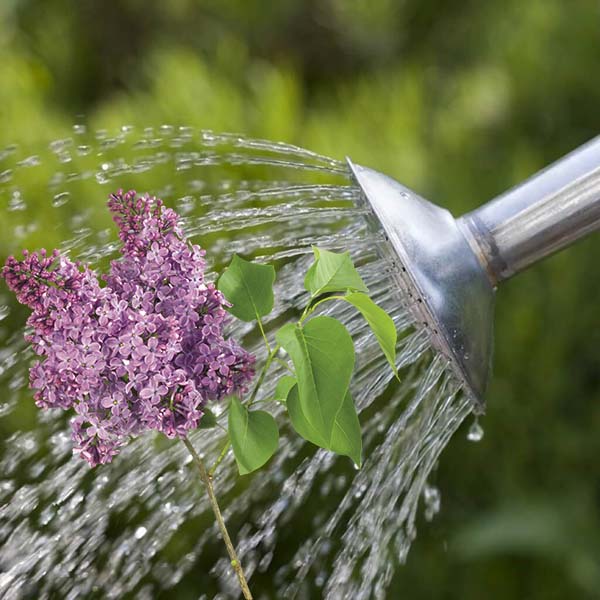
Of course, shrubs need moisture not only in spring and summer, but also during autumn root growth. Therefore, in September-October, underground watering is carried out, pouring 3-4 buckets of water under each bush.
Top dressing
As a rule, gardeners forget about feeding lilacs, although its flowering depends on this. However, in the first 3-4 years after planting, if you poured a sufficient amount of fertilizer into the planting hole, the shrub does not need additional fertilizing, except that you can apply nitrogen in early spring for faster growth of green mass. For example, ammonium nitrate and urea (carbamide) are perfect.
For 4-5 years in the spring, you can start feeding the lilacs with organic matter. For example, an infusion of mullein, made in a proportion of 1 liter of product per 10 liters of water, is suitable, although many summer residents use a stronger solution of 1 to 5 (but it is better not to do this).
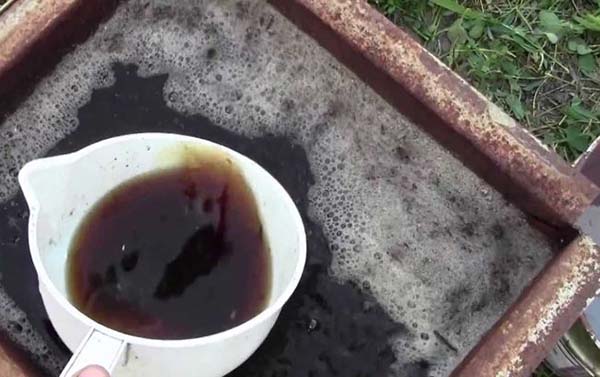
In autumn, it is recommended to apply phosphorus-potassium fertilizers under lilacs. For example, during the digging process, you can add 40-50 grams dry superphosphate and 30-40 grams of potassium sulfate per 1 bush. Liquid feeding can also be done wood ash, diluting 100-200 grams of ash (1-2 glasses) in 10 liters of water.
Video: feeding lilacs and other conditions for lush flowering
Pruning
Without proper pruning, lilacs will start to run wild and degenerate in a few years. It will overgrow strongly, and all inflorescences will form only at the very top, but there will be no good flowers in the center of the bush.
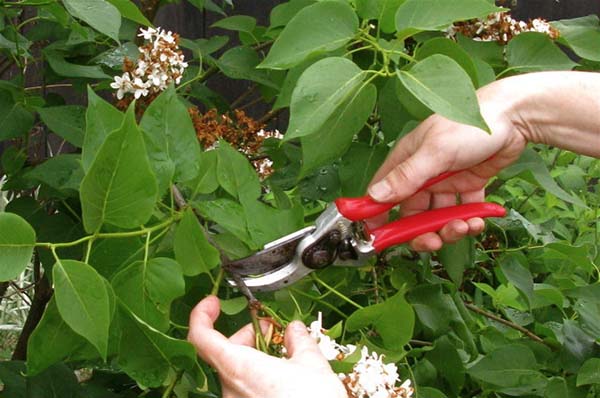
There is also such a widespread point of view that the more the lilac is broken or cut, the better it will bloom. This is not entirely true, because pruning must be done according to some very important rules and guidelines.

Of great importance for the future flowering of lilacs is the pruning of faded panicles in mid-summer - in July, thanks to which the shrub will stop spending energy on their nutrition, the growth of young shoots will be activated, and new flower buds will begin to form.
Formative pruning of lilacs is carried out according to the following scheme:
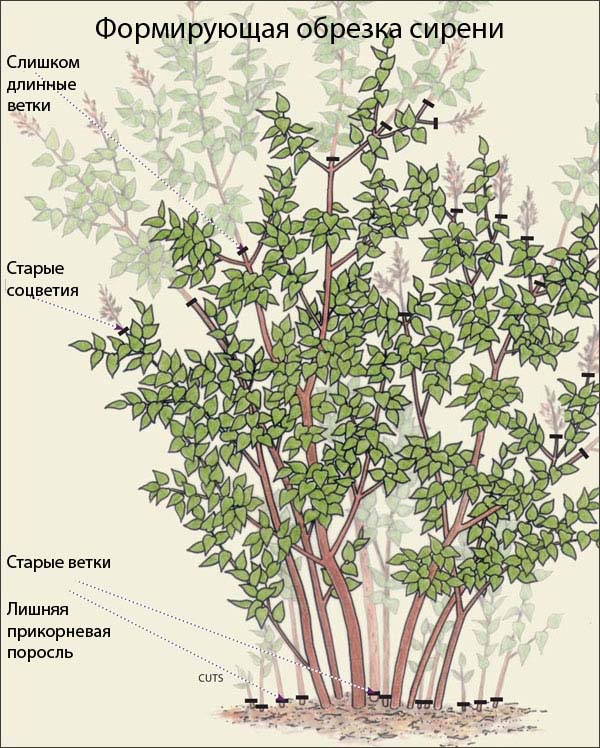
By the way! In addition to branches, it is necessary to remove excess root growth.
To maintain the beautiful shape of the shrub and for its abundant flowering, pruning of lilacs must be done on a regular and systematic basis.
You can see how to properly cut lilacs in this video:
You will find theoretical schemes for pruning lilacs and an explanation of why you need to do this in this video:
Do not forget to carry out sanitary pruning every spring and during the summer and autumn, removing all damaged and drying branches.
Treatment against diseases and pests
If on the lilac itself or on neighboring shrubs last year you noticed obvious signs of disease or damage by any pests (lilac hawk moths, powdery mildew), then before budding, the bushes should be treated with special solutions. For example, you can sprinkle with a 1% solution of Bordeaux liquid or prepare a solution of copper oxychloride by dissolving 2-3 tablespoons of the product in 1 bucket of water.
But, as a rule, few people have ever heard, and even more so seen, that the lilac is sick or that pests attack it.
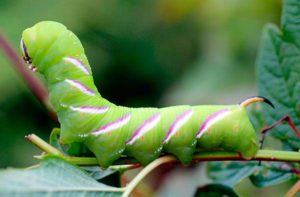
Video: caring for lilacs and fighting its pests
There is nothing more beautiful and aromatic in spring than lilac bushes. However, it also has its own character, and its own requirements for planting, care and pruning. Follow our advice, recommendations, and the lilac will willingly grow and bloom on your site.
Video: planting, care, growing and reproduction of lilacs

